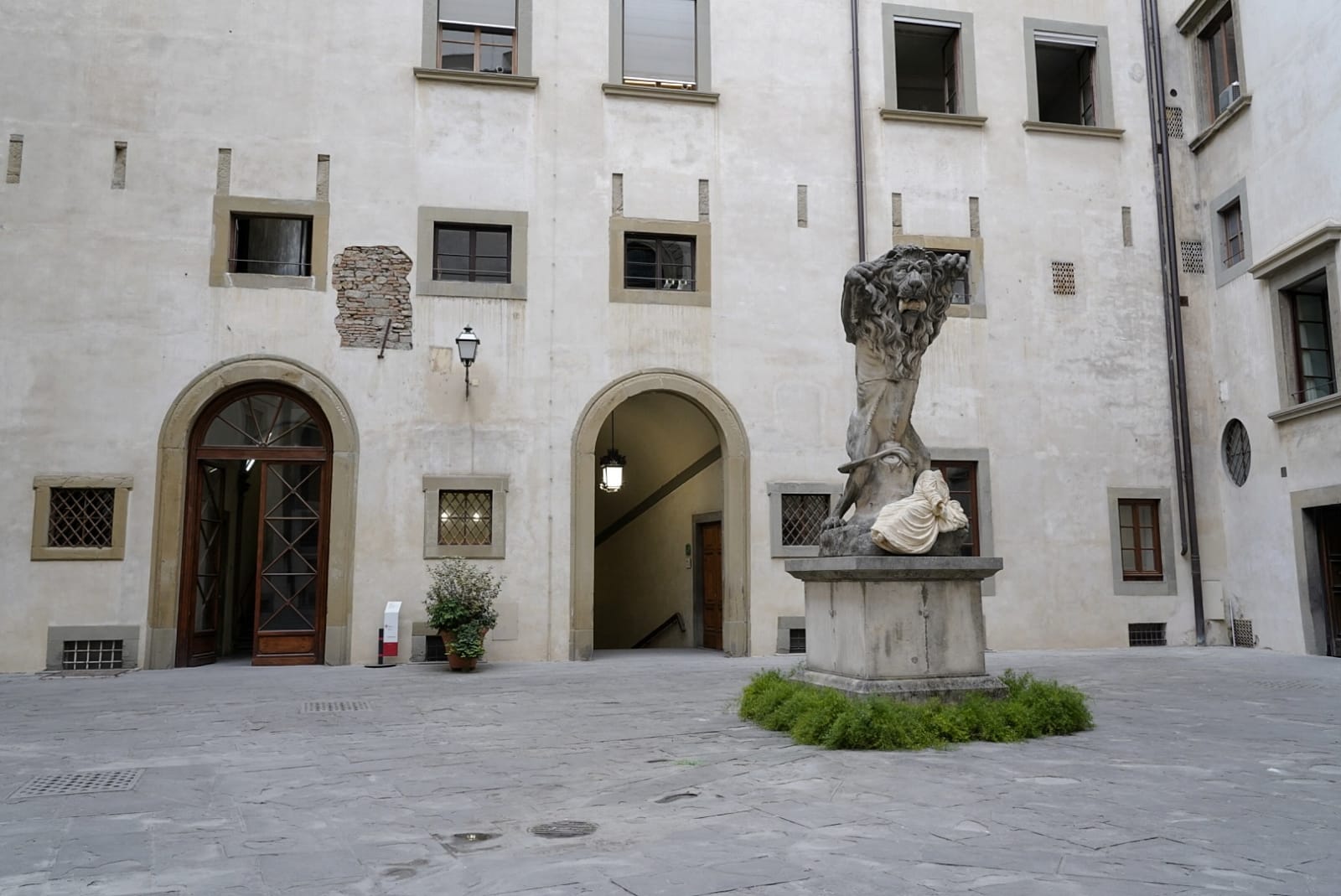The “Pieta” by Francesco Vezzoli was acquired by the municipality of Florence and entered the permanent collection of the Palazzo Vecchio. This is an impressive sculpture created in 2021 as part of the Francesco Vezzoli exhibition in Florence, curated by Cristiana Perrella and Sergio Risaliti, which will run in Piazza della Signoria and Palazzo Vecchio until February 2022. An installation depicting a 20th-century lion unrestrainedly holding a 2nd-century AD Roman head in its mouth is located on an ancient foundation inside the third courtyard of the Palazzo Vecchio. A real meeting of eras, styles and cultures that are far from each other, which brings the ancient and the modern into a dialogue. “GRATITUDE” FRANCESCO Vezzoli “We are happy that the lion has returned and found here a new home that protects him after last year’s exhibition, and we are proud of this new season of the city, which has accepted the challenge of dialogue and sometimes about the conflict between the Renaissance and modernity with so many artists, who have measured themselves in this, from Fabre to Koons and Penone, and now Francesco Vezzoli,” Mayor Dario Nardella said. Sergio Risaliti, director of the Novecento Museum, explained that Vezzoli is “a sculpture of modern craftsmanship with a rustic character and quite impressive in its pose. There is great excitement now that she is once again installed in one of the courtyards of the Palazzo Vecchio in a context that historically and symbolically justifies her presence.” . THE LION IN FLORENTINE ICONOGRAPHY The lion has actually been the totem animal protector of the Republic of Florence since its founding in 1115: think of Donatello Marzocco’s lion, or the two lions guarding the steps of the Loggia dei Lanzi, or the golden lion. Arnolfo’s towers, to name but a few. In this way, Vezzoli fits into a broad iconographic tradition with an ancient history, but at the same time adds a touch of modernity that fascinates, and sometimes displaces and confuses the observer. (Top image: Francesco Vezzoli, Pieta. Palazzo Vecchio, Florence)

